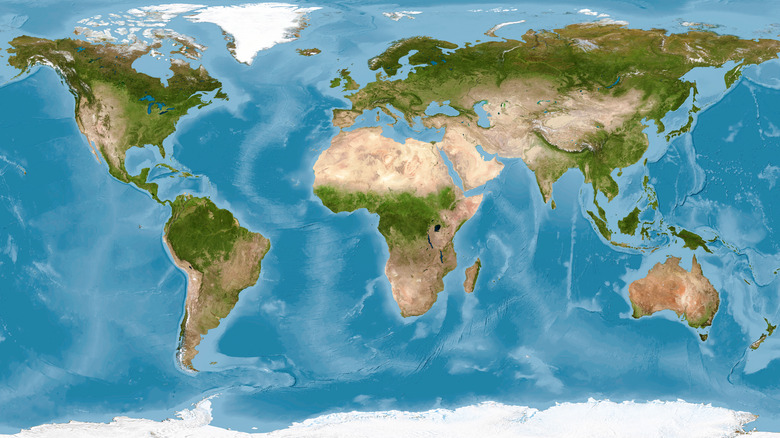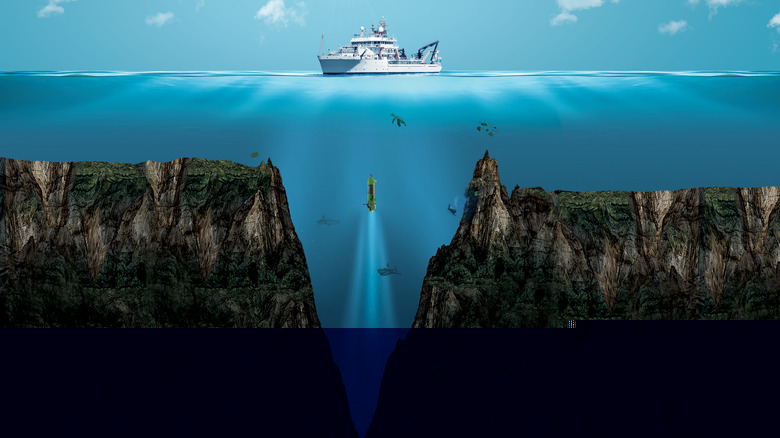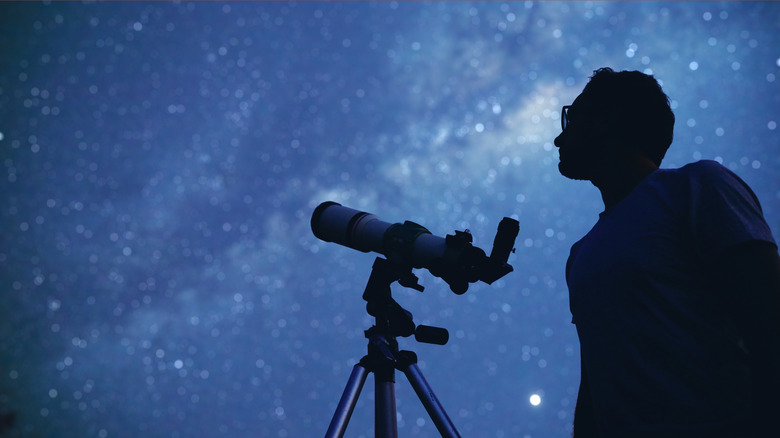Do We Know More About Space Than Earth's Oceans?
At some point, you may have read or heard someone say that 95% of Earth's oceans remain unexplored. While this a bit of an exaggeration, the fact is we really don't know as much about the ocean as we would like to. As NASA Oceanographer Dr. Gene Feldman puts it, "we have better maps of the surface of Mars and the moon than we do of the bottom of the ocean" (via Saildrone).
The mystery behind the ocean lies in the difficult in exploring it, but with upcoming NASA missions to the Moon and Mars, and projects like the recently launched James Webb Space Telescope, is seems that space exploration is moving at a faster pace than ocean exploration. We might even know more about space than what lies in the depths of our oceans. But why? Shouldn't it be just as difficult, if not more so, to study space?
Mapping the ocean floor is very difficult
The bottom topography of the ocean is far less known than several planets in our solar system. For example, around 99% of Mars' surface has been mapped, thanks to the Mars Reconnaissance Orbiter (via NASA). One of the main reasons the oceans remain such a mystery is the difficulty with mapping the ocean floor. Mapping the ocean where water is deeper than a few meters is extremely difficult because you can't use electromagnetic waves like radar and light, which are the primary methods for mapping terrain on Earth and other planets (via Saildrone).
The good news is, the entire ocean floor has been mapped — sort of. The resolution at which we have mapped the ocean floor so far is only about three miles, meaning any details smaller than that are left out. This has given scientists a good look at the overall dips and peaks, but has washed away interesting details (via Scientific American).
Humans can't easily visit the ocean floor
In addition to difficulties in mapping the ocean floor, it's not easy for a human to travel down there and study it directly. Surviving in the ocean is hard due to cold temperatures and, the deeper you go, high water pressure. The water pressure in deep parts of the ocean is strong enough to crush a person. In addition, once you go deep enough, sunlight can no longer reach you, making the bottom of the ocean pitch black (via World Atlas).
The difficulty and high costs of sending down submarines and underwater vehicles has made acquiring more detailed maps of the ocean floor challenging. Researchers must instead rely on sonar in order to generate more detailed maps (via NOAA). Using sonar, scientists have been able to achieve a resolution of about 328 feet, much more precise than the three-mile resolution. The problem is that this method is much more tedious, so only around 10% to 15% of the ocean has been mapped in this level of detail so far (via Scientific American).
The oceans are extremely vast
Another aspect of exploring and mapping the ocean is the sheer size of it all. In addition to making up 70% of the Earth's surface (with the Pacific Ocean making up a whopping 45% of it alone), the oceans are vast in depth as well. The average depth of the ocean is 12,100 feet. The deepest part of the ocean, located in the Mariana Trench, is about 36,000 feet deep, which is deeper than Mount Everest is tall (via World Atlas).
Between the size and volume of the Earth's oceans, plus the need for hands-on exploration in order to get more detailed maps of the ocean floor (which is difficult and expensive), it is no wonder most of the ocean remains relatively unknown. But why does it seem like we have been able to discover more about space than our own planet? Shouldn't it be harder and more expensive to launch a rocket into space than to send a submarine down below? The answer as to why we have put more time and energy into space exploration is a bit more complicated than it might seem.
Space is easier to study and explore
Compared to the difficulties with studying the ocean, learning about space is a walk in the park. Humans have been able to study the cosmos since essentially the beginning of time by simply looking up at the stars. The telescope, a quintessential part of astronomy, has been used for studying the night sky since Galileo first pointed it upwards in 1609 (via the Library of Congress).
Contrast the quick advancements made in astronomy with the fact that the first map of the seafloor wasn't made until the 1957 publication of Heezen and Tharp's "Physiographic Map of the North Atlantic," and you begin to feel like maybe we do know more about space than our own oceans (via NOAA). Add in the fact that over 600 people have gone to space (via World Spaceflight) while only around 20 have gone to the Mariana Trench, and the oceans start to feel even less familiar (via Scientific American).
There is still much we don't know about space
While the most powerful telescopes can see 13 billion light years away, there is still a lot we don't know about space (via World Atlas). It may seem like we know more about the galaxy than the ocean, but reality is a bit more complicated than that. Scientists don't yet know exactly how big space is, and multiverse theory suggests our universe may not even be the only one. The massive size of our universe also makes space travel difficult, so studying anything outside our solar system in person is nearly impossible with current technology.
While advancements in space exploration are being made every day, it is reasonable to say, despite the difficulty ocean exploration has presented to humans, we most likely know more about Earth's oceans than we do about space (via How Stuff Works). As technology becomes more advanced, we may be able to find easier ways to study both the universe and the ocean floor.





